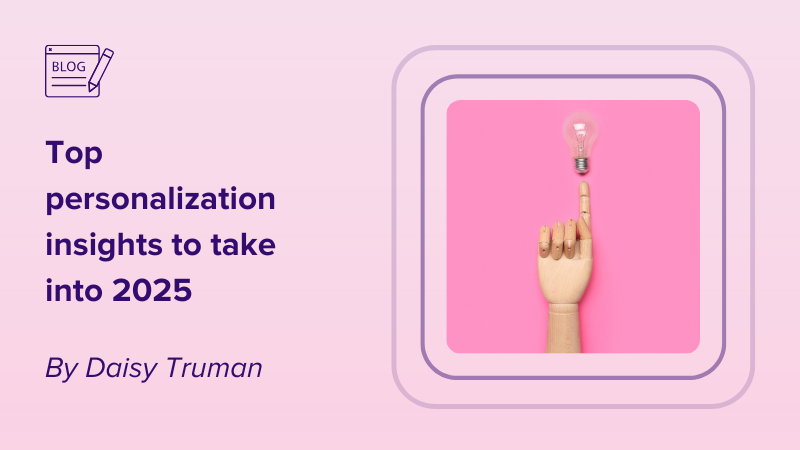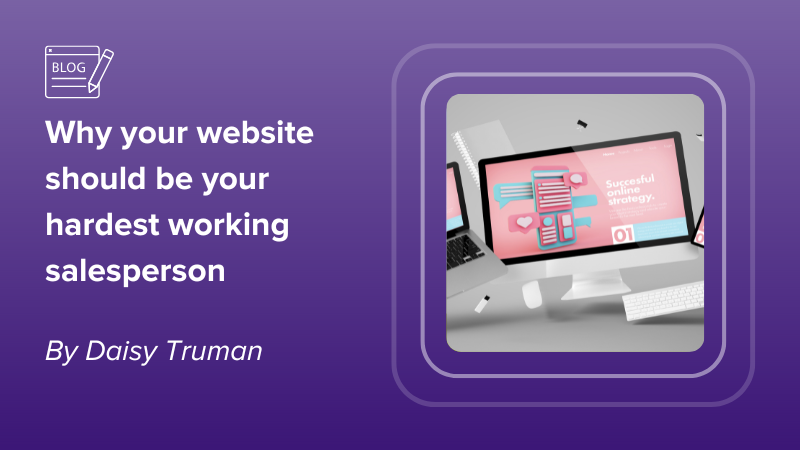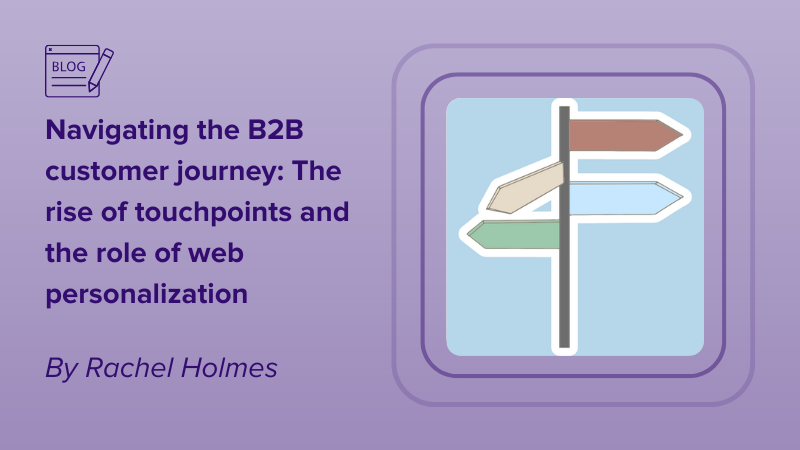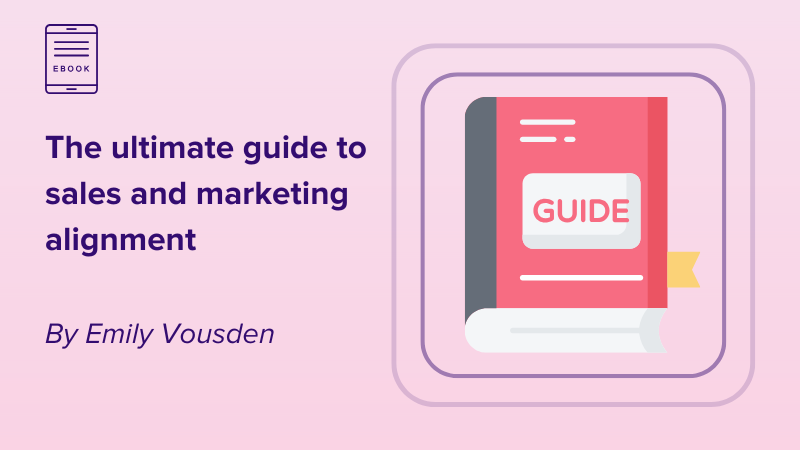Everyone likes to feel spoiled, and B2B buyers are no different. Unfortunately, getting buyers’ attention is not as simple as handing them a fancy glass of champagne and some canapes. Marketers must work harder to roll out the red carpet for your prospects or risk losing them in the sea of competition.
Account-based marketing (ABM) has proven to be a successful strategy for the B2B industry, but there’s a new kid on the block: ABX. Account-based experience (ABX) has all the data-driven and account-focused qualities of ABM, but with more confidence, comprehensiveness, and customer-centricity.
In this eBook, we’ll explore the ins and outs of ABM versus ABX and reveal the essential steps you can follow to launch your first ABX campaign.
Before we dive in, let’s remind ourselves what ABM is and why it’s such a powerful strategy…
What is ABM?
ABM involves adapting your marketing strategy to target a select group of high-value accounts that meet your Ideal Customer Profile (ICP) criteria. After you’ve created this prestigious list of accounts, you can tailor your marketing and sales efforts to resonate with their needs, interests, and pain points.
This targeted approach leads to stronger relationships, shorter sales cycles, and a higher return on investment than traditional marketing methods that cast a wider net. By aligning marketing and sales to deliver laser-focused personalized experiences throughout each unique buyer’s journey, ABM fosters deeper engagement and drives more meaningful interactions—and a better chance of snaring those dream accounts.
But ABM still has a few holes. As Jon Clarke, Webeo’s recent podcast guest from leading marketing agency Transmission, says: “The letter ‘M’ stands for ‘marketing,’ but it’s really only part of the story.”
So, what is ABX?
ABX includes everything that ABM does… and then some. Whereas ABM’s goal is to acquire “dream” high-value accounts, ABX aims to nurture and engage these accounts across the entire customer journey and account lifecycle, even after the deal is done. It takes a more holistic view of customer engagement, valuing revenue and retention as much as signing on the dotted line.
ABX draws on the empathetic and customer-centric attitude of customer experience (CX) and ABM’s ability to focus on accounts rather than simply capturing leads.
CX + ABM = ABX
In 2022, only 5% of CMOs said customer experience is at the top of their marketing priority list. Fast forward to 2023, and this figure jumped to 21%. If this trend continues, we can expect to see more and more C-suite entities prioritizing and promoting customer experience.
The reasoning behind this is pretty clear, as Webeo’s CEO Kirsty Dawe explored on our recent podcast, “When businesses consider how they can develop sustainable and profitable business growth, they need to deliver the same consistent experiences across the customer journey.”
The CMO magazine described ABM as “the chef making personalized meals for each friend at a dinner party” and ABX as the person “curating the entire dining experience, including ambiance, décor, music, and transportation.”
ABM vs ABX – the big showdown
A recent report by McKinsey found that “B2B companies winning the most market share” are “developing a sophisticated digital customer experience,” despite “B2B [previously] saying it wasn’t possible due to factors such as complexity, technical requirements, value, and the number of decision-makers.”
How to get started with ABX
Although ABX can be a complex strategy, we’re revealing the crucial steps to follow for ABX success.
Get all teams onboard
When ABM emerged, it took the world of B2B marketing by storm with one key innovation: sales and marketing alignment. For the first time, marketing and sales teams worked closely together to identify target accounts and qualify leads.
In their recent conversation, Kirsty and Jon explained that there are two key foundational metrics to understand when planning your ABX strategy:
- How do we keep customers for as long as possible?
- How do we upsell and cross-sell at the appropriate time? With the value proposition, products, and services we think those clients want?
The only way you’ll find the answers to these questions is by harnessing cross-team collaboration. For a successful ABX strategy, your target accounts require even more care and attention, which means input from departments across your organization.
As our podcast guest Jon Clarke explained, “Client-side teams often want to tie things into campaigns, but it’s really about considering the part marketing and other teams play in the customer journey.”
Therefore, you’ve got to get everybody on board for ABX:
- Marketing: Responsible for developing personalized campaigns and creating an engaging customer experience across all channels.
- Customer marketing: A 5% increase in customer retention can increase company revenue by 25-95%. Involving customer marketing in your ABX approach ensures you’re maximizing upsell and retention opportunities.
- Sales: Takes on a more consultative approach, focusing on building long-term relationships rather than just sealing the deal.
- Customer success: Takes the reigns from sales to seamlessly onboard, train, and support customers for tip-top satisfaction and better retention rates.
- Customer support: Provides technical assistance tailored to the client’s unique challenges.
- Product development: Responsible for incorporating customer feedback into product roadmaps.
Curate your tech stack
Building the optimal tech stack for your business is like curating an art gallery exhibition—you need to choose pieces that complement each other’s style, function independently, and integrate to create the final product.
Throughout 2024, 37% of CMOs plan to expand their existing MarTech stack and close skills gaps. For a successful ABX campaign, we recommend:
- Customer relationship management (CRM) software: A one-stop-shop for storing and managing all customer data. Examples include Salesforce and HubSpot.
- Marketing automation platform: Automates marketing tasks, nurtures leads, and tracks campaign performance. You could use Pardot or Marketo.
- Website personalization software: Tailors website content and experiences based on visitor data. Webeo is a go-to choice.
- Content management system (CMS): Enables you to manage and publish all content personalized for target accounts. Drupal and WordPress are popular.
- Data analytics platform: Helps you gain deeper insights into customer behavior and campaign performance. The best website personalization solutions may have built-in data analytics capabilities. Choices include Google Analytics and Hotjar.
After all, everything in marketing comes back to data, including your ABX strategy. Jon Clarke explains, “Being able to pick up on engagement activity, identify who those audiences are, and overlay intent data is essential for working out how things are changing inside the target organizations. For example, who’s in the market, who’s not, what are they showing interest around, and what campaigns are working most effectively across different accounts.”
Measurement and optimization
You might not hit a home run with your first-ever ABX campaign, but you can swiftly get things back on track with these steps:
- Delegate responsibility: First things first, decide who is responsible for gathering feedback. Will it be marketing, sales, or customer success teams?
- Learn from churn: If the worst happens and a client churns, consider your successes and failures. Define what specific information you want to gather from churned customers before they go.
- Choose the channels: Consider how you will collect feedback in a straightforward and accessible way for clients. For example, you could gather quantitative and qualitative data through a mix of customer interviews and NPS surveys.
- Analyze, analyze, analyze: There’s no point in collecting feedback if you don’t invest time in reviewing it. Take a deep dive into the results and consider how to use the feedback to inform future ABX strategies.
- Complete the loop: Share your findings with all teams involved in the ABX process. Ask everyone to chip in their two cents—cross-cultural involvement is still important even at this stage.
- Communicate with your customers: If necessary, share your findings and action points with existing customers to prove that you value their feedback and are taking action.
According to McKinsey, “there is no time to wait on personalization. Winning B2B companies invest in sophisticated marketing tactics, going beyond account-based marketing and disproportionately using hyperpersonalization in their outreach.”
Implement website personalization
93% of B2B buyers use online channels like websites for their procurement needs, and Gartner predicts that a huge 80% of all B2B sales interactions will occur via digital channels by 2025. Goodbye, phone calls and face-to-face client meetings—hello, investment in your website.
Kirsty and Jon discussed that “only roughly about 5% of your market will be in the market right now. Although 95% won’t be, you should be marketing to both in different ways. Clearly, for those in the market, you can use a direct solution-led approach. For those that are not, it’s about building awareness, making sure the representation of your brand is positive, and you’re known for what you want to be known for. At some point, they will be in the market, and you want them to come to you. So, the website plays a pivotal role in your ability to do that.”
A strategy called website personalization has the answer. With a website personalization tool, you can serve every B2B visitor with the most relevant content at the right time as soon as they hit your website. It’s the ideal ABX addition to provide prospects with an engaging experience right at the very start of their customer journey, showing them that you understand their pain points, goals, and requirements.
After all, ABX is all about providing each decision-maker or account with the best individual experience. Website personalization enables you to deliver a totally unique experience for prospects at various stages of the funnel, not just at the beginning when you’re trying to reel them in. You can also learn from valuable data sources to tailor your campaigns to the decision-makers themselves; for example, a CTO will have different goals and priorities compared to an HR lead, and you can ensure your website speaks to each person when relevant.
ABX trend prediction: AI
ABX is still a fairly new strategy with plenty of room for exciting growth and adaptations. We predict that AI will have a huge influence on ABX in the future, just as it’s made its mark on other aspects of marketing.
B2B marketers have already turned to AI to support their ABM efforts. Especially SMEs that lack the budget and in-house resources to deploy creative talent like copywriters and designers. For ABX campaigns, AI can be used to inform decision-making, research, and messaging. There are also other innovative use cases yet to be explored.
Gartner predicts that AI will continue to hugely impact sales and marketing in the next few years. Noting that “AI offers improvement potential for processes. For example, replacing sellers’ educated guesses around what to do next in a complex B2B deal with AI solutions that can reliably detect
ABX success with Webeo
There’s no doubt that ABX is a must-do for growth-focused B2B businesses. However, executing successful ABX is another story, requiring resources and access to data insights you may not have at this stage in your journey.
At Webeo, we are here to help you roll out a one-to-one red carpet experience to your high-value accounts at every stage of the customer lifecycle. whether they are interacting with your website for the first time or are an existing customer.
With Webeo, you can drive more revenue from your B2B website using the power of personalization. We tap into our exclusive wealth of data to deliver the experiences your prospects need when they need them so you can convert more of your wasted website traffic.
Book a demo today to take Webeo for a test drive.




